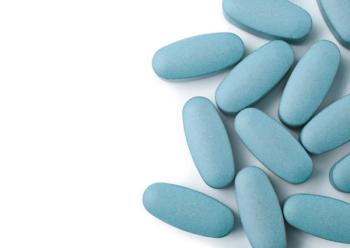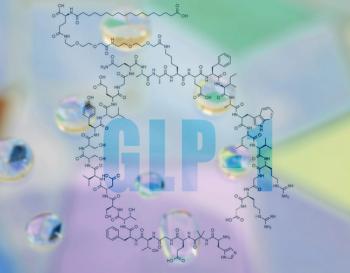
- Vol 42, Issue 7
History, Physiology, and Pharmacology of Incretins
Key Takeaways
- GLP-1 and GIP are key incretins involved in glucoregulation, with GLP-1 RAs showing significant therapeutic potential in T2DM and beyond.
- Exendin-4's discovery led to the development of GLP-1 RAs, which resist rapid degradation and have improved bioavailability compared to native GLP-1.
Roger S. McIntyre, MD, FRCPC, shares the backstory and pharmacology of incretins to better understand the role of GLP-1 RAs in psychiatry.
SIDEBAR
Read Dr McIntyre's lead story "Transformation 2.0:The GLP-1 RAs as Psychiatric Medications?" in the July issue of
In the late 1800s, Ivan Pavlov, MD, hypothesized that pancreatic secretions in response to an environmental stimulus were mediated by the enteric nervous system.1,2 In 1902, Baylis and Starling discovered that pancreatic secretions were instead more likely stimulated by substances extracted from duodenal epithelium, which they named secretins.2 Insulin (1921), glucagon (1923), and cholecystokinin (1928) were subsequently discovered as peptides relevant to glucoregulation and gallbladder contraction respectively. Soon after, in 1932, Jean La Barre coined the word incretin to refer to a ligand that stimulates the endocrine pancreas.1,3
In 1970, Pederson and Brown discovered a protein that they hypothesized reduced gut motility and gastric acid secretion, gastric inhibitory polypeptide (GIP). Shortly thereafter, it was discovered that physiologic levels of GIP had questionable effects on gut motility and gastric secretion and instead had robust incretin-like effects on glucoregulation. This observation prompted a change in the acronym definition to glucose-dependent insulinotropic polypeptide, the first recognized incretin. Subsequently, in 1986, the pioneering work of Holst, Habener, Mojsov, and Drucker led to the discovery of glucagon-like peptide-1 (GLP-1), an incretin with approximately 50% homology to glucagon.3,4
GLP-1 is a cleavage product of the preproglucagon gene. GLP-1 exists in multiple isoforms, of which GLP-1 (7-37) is the principal circulating biologically active molecular form.4 GLP-1 is synthesized and exocytotically released by enteroendocrine L cells in the intestine (notably, the distal jejunum, ileum, and colon) in response to food intake and enteroendocrine signals.5 GLP-1 is also synthesized and released by neurons in the nucleus tractus solitarius, which has efferent projections to limbic regions (eg, ventral tegmental area), hypothalamus, and cortex.
GIP is a 42 amino acid protein synthesized by K cells in the mucosa of the duodenum and jejunum. It is not definitively established whether GIP is also synthesized in the central nervous system (CNS), although CNS GIP receptors have been reported.6 Both GLP-1 and GIP exert their effects via their respective G protein–coupled receptors. These receptors are located in multiple areas, including, but not limited to, pancreatic β cells, heart, lung, immune system, microglia, and neurons in cortical and subcortical structures.
In addition to glucose-stimulated insulin secretion, incretin agonists also inhibit glucagon synthesis and exocytosis, gastric motility, and consummatory behavior. GLP-1 also increases pancreatic islet cell survival and mass by inhibiting proapoptotic signals, a pathophysiologic process implicated in type 2 diabetes mellitus (T2DM). The critical role played by incretins in glucoregulation provided impetus to pharmacologically mimic their effects. An obstacle with respect to the discovery of a viable pharmacologic ligand of GLP-1 is its relatively short half-life (ie, less than 2 minutes) via rapid degradation by the enzyme dipeptidyl peptidase-4 (DPP-4).
A breakthrough in 1992 occurred with the discovery of exendin-4 in the venom of the Gila monster, Heloderma suspectum.7 Exendin-4 was noted to be functionally similar to human GLP-1, but unlike GLP-1, exendin-4 resisted rapid degradation by DPP-4. This observation provided the basis for the discovery of pharmacologic agents that affect incretin signaling either by resisting rapid proteolytic cleavage (ie, GLP-1 receptor agonists [RAs]) or inhibiting DPP-4 (eg, sitagliptin, saxagliptin). Consequently, exenatide, a synthetic mimetic of the naturally occurring exendin-4, became a viable pharmacologic agent for T2DM by having greater bioavailability relative to native GLP-1.
Since the FDA approval of exenatide, multiple GLP-1 RAs have received FDA approval for T2DM. Most GLP-1 RAs are parenterally administered and differ in their interval of administration. Only semaglutide exists in oral formulation, with late-phase development supporting the possibility of oral nonpeptide small-molecule GLP-1 RAs (eg, orforglipron). Oral nonpeptide incretin agonists have many advantages, including simpler administration, greater acceptability by patients, improved flexibility when combined with other agents, and lower production costs.8 In addition, dual agonists (eg, GLP-1-GIP agonists; tirzepatide) are now FDA-approved, and triple agonists (eg, GLP-1-GIP-glucagon agonists; retatrutide) are expected to receive FDA authorization in the next 1 to 2 years.9
Soon after their introduction, GLP-1 RAs’ significant weight-lowering effects and health benefits in other medical disorders became apparent, with relatively greater metabolic and weight loss benefits reported with newer GLP-1 RAs and dual agonists. Currently, GLP-1 RAs as a class (with differences among agents) are approved by the FDA for multiple conditions (Table). Other indications that are being pursued include, but are not limited to, heart failure with preserved ejection fraction, peripheral artery disease, and metabolic liver diseases (eg, noncirrhotic nonalcoholic steatohepatitis). In addition, semaglutide is approved for weight management in individuals 12 years and older, and liraglutide is approved for T2DM in individuals 10 years of age and older.10
Dr McIntyre is a professor of psychiatry and pharmacology at the University of Toronto and head of the Mood Disorders Psychopharmacology Unit at the University Health Network in Toronto, Canada. He is also the executive director of the Brain and Cognition Discovery Foundation and director and cochair of the scientific advisory board of the Depression and Bipolar Support Alliance. He is a professor and Nanshan Scholar at Guangzhou Medical University in China, an adjunct professor at Korea University College of Medicine in Seoul, a clinical professor at the State University of New York Upstate Medical University in Syracuse, and a clinical professor in the Department of Psychiatry and Neurosciences at the University of California Riverside School of Medicine. He is the founder of the Canadian Rapid Treatment Centre of Excellence and CEO of Braxia Scientific Corp.
References
1. Müller TD, Adriaenssens A, Ahrén B, et al.
2. Bayliss WM, Starling EH.
3. Rehfeld JF.
4. Philippe J, Powers AC.
5. Müller TD, Finan B, Bloom SR, et al.
6. McIntyre RS, Rasgon N, Goldberg JF, et al. T
7. Yap MKK, Misuan N.
8. Luna Ceron E, Reddy SD, Kattamuri L, et al.
9. Tewari J, Qidwai KA, Tewari A, et al.
10. Drucker DJ.
Articles in this issue
5 months ago
Successfully Prescribing MAOIs for Depression5 months ago
The Hotseat...Newsletter
Receive trusted psychiatric news, expert analysis, and clinical insights — subscribe today to support your practice and your patients.













